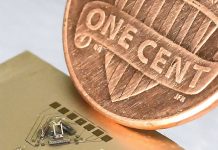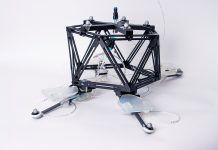
Imagine a robot that you could eat for lunch or dessert. This idea might sound like science fiction, but it could soon become a reality.
Scientists at EPFL (École Polytechnique Fédérale de Lausanne) are working on a project called RoboFood, which aims to combine robots and food.
Traditionally, robots and food have been very different. Robots are usually made from inorganic, bulky materials and are not biodegradable.
On the other hand, food is organic, soft, and breaks down easily. However, recent research in edible robots shows a lot of promise.
Edible robots could reduce electronic waste, help deliver nutrition and medicines, monitor health, and even create new culinary experiences.
So, how close are we to having a fully edible robot? And what are the challenges?
Scientists from the RoboFood project discussed these questions in an article published in the journal Nature Reviews Materials.
“Bringing robots and food together is a fascinating challenge,” says Dario Floreano, director of the Laboratory of Intelligent Systems at EPFL and the first author of the article.
In 2021, Floreano teamed up with Remko Boom from Wageningen University in the Netherlands, Jonathan Rossiter from the University of Bristol in the UK, and Mario Caironi from the Italian Institute of Technology to start the RoboFood project.
In their article, the RoboFood team looked at which edible ingredients could be used to make robot parts and whole robots. They also discussed the challenges involved. “We are still figuring out which edible materials work similarly to non-edible ones,” Floreano explains. For example, gelatin can be used instead of rubber, rice cookies can act like foam, chocolate film can protect robots in humid environments, and a mix of starch and tannin can mimic commercial glues.
These and other edible materials are being studied to create robotic components. “There is a lot of research on single edible components like actuators, sensors, and batteries,” says Bokeon Kwak, a postdoctoral researcher in Floreano’s group and one of the authors.
In 2017, EPFL scientists created an edible gripper made from gelatin. This gripper could handle an apple and then be eaten afterward. Recently, EPFL, IIT, and the University of Bristol developed a new conductive ink that can be sprayed on food to sense its growth. The ink uses activated carbon as a conductor, while Haribo gummy bears serve as a binder. Other sensors can detect pH levels, light, and bending.
In 2023, IIT researchers created the first rechargeable edible battery. This battery uses riboflavin (vitamin B2) and quercetin (found in almonds and capers) in the battery poles, activated carbon for electron transport, and nori algae (used in sushi) to prevent short circuits.
Packaged with beeswax, this 4 cm wide edible battery operates at 0.65 volts, a safe voltage if ingested. Two edible batteries connected in series can power a light-emitting diode for about 10 minutes.
Edible robots are still in the experimental stage, but they hold great potential for the future. With continued research, we might soon see robots that can help us and then become a part of our meal.



